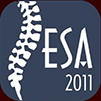Subject Area
Craniocervical junction
Article Type
Clinical Study
Abstract
Background Data: Axis fixation is still challenging due to intimate relation with the vertebral artery and complex topographical anatomy. Purpose: The aim of this work is to assess and compare the safety, feasibility and limitations of 3 posterior segmental axis fixation techniques (transpedicular, transpars and translaminar screws). Study Design: A retrospective anatomico-radiological study. Material and Methods: Forty axis vertebrae (27 dry bone and 13 computedtomography scans of patients who underwent axis fixation) were retrospectively studied (total 80 sides). The morphology of the pedicle, pars interarticularis and lamina were assessed bilaterally for the width (W), height (H) and screw length (L). In addition, the spino-laminar angle was measured. It was considered difficult for a conventional 3.5mm screw to be inserted safely, if any of these parameters is ≤4.5mm. Results: The mean pedicle, pars and lamina W and H were (6.0±1.5mm and 7.1±1.8mm), (9.51.6±mm and 192.5±mm) and (6.21.5±mm and 12.1±1.5mm) respectively. The mean spino-laminar angle was 45.1±4° laterally. The mean transpedicular and translaminar screw lengths were 26.8±2.2 and 23±4.1mm respectively. While the feasibility rates were 83.7% and 90% because the pedicle (W and H) and laminar (W) were ≤4.5mm respectively. All the pars measured in this study can tolerate a 14mm screw. However, when using15mm, 16mm, 17mm and 18mm screws, the incidence of violating the vertebral artery groove was 2.5%, 6.3%, 13.8% and 23.8% respectively. Conclusion: Transpedicular screws provide the most rigid fixation (longest screws), however in case of high vertebral groove, translaminar screws are better option rather than transpars screws except in small size laminae. (2016ESJ094)
Keywords
Axis Fixation, Trans-laminar, Transpars-interarticularis, Transpedicular screws, Atlantoaxial Instability
How to Cite This Article
El-Gaidi,, Mohamed
(2016)
"Methods of Segmental Screw Fixation of Axis: A Cadaveric and Surgical Study,"
Advanced Spine Journal: Vol. 18
:
Iss.
1
, Article 1.
Available at: https://doi.org/10.21608/esj.2016.3985




















